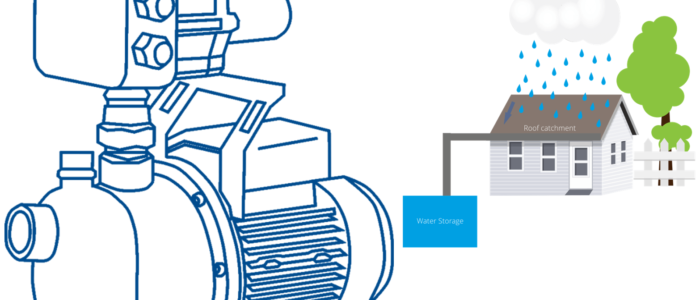Five Rainwater Harvesting Systems For Individual Property Needs
Article Chapters
Rainwater Harvesting – Sustainable Water Recycling to Harness Rising UK Rainfall
The response to climate change is a sustainable solution at global and domestic level. Water recycling, and the application of rainwater harvesting is helping to drive resource to consumption efficiencies. The need is critical as UK households now use nearly 350 litres (76.99 gallons) of water every day, according to the Energy Saving Trust.
At the same time, recent data modelling predicts that there could be up to 35 per cent more rainfall during winter months in the UK. Annual rainfall records could rise by nearly a quarter (24 per cent) by 2070 through to the end of the century, according to environmental scientists (Climate Research, 2019).
Rainwater Harvesting capacity to collect and store for seven days or more
A rainwater harvesting system can collect around 0.62 gallons of water per square foot of roof area, per inch of rainfall. A 1,000-square-foot roof could potentially store more than 600 gallons of water – or around seven days average UK household consumption. Even a relatively small storage tank has a 1,000 litre (219.97 gallons) capacity. Clearly, the use of a rainwater harvesting system offers householders a vital water recycling and cost cutting capability.
Did you know…
- Toilet flushing, watering the garden and car washing uses more than half of all household water consumption.
- The domestic WC consumes the most water – around 30 per cent and washing clothes uses up a further 13 per cent of domestic water use.
Rainwater Harvesting Systems – Five Options
The principle of rainwater harvesting is for down-pipes to deliver water from the roof to a storage tank usually installed under ground, which is then filtered and directed to an:
Indirect / Gravity-fed system – water sent to a header tank in the loft to feed household appliances by gravity. The header tank will have one connection for mains water and a second, separate connection for rainwater. The pump will operate only when the header tank requires to be filled.
There are variations to either an Indirect or Gravity-fed system:
(i) Indirect Pumped – internal tank can be situated at any level in the building. Instead of using gravity, a booster pump set provides a pressurised supply, offering greater flexibility as the flow and pressure of the booster pump can be calibrated to an individual building.
(ii) Gravity Only – rainwater is collected from a part of the roof with gutters located above the filter and collection tank – and above all outlets. The storage tank must be located below the level of the gutters but higher than the outlets to be supplied.
Direct Pumped (Immersible) System – a pressurised water supply sent directly to each household appliance. This type of system has a mains water back up, and an air gap between the mains water connection and the rainwater tank, which prevents cross contamination of rainwater into the mains water pipework. It is all-important to consider the distance between the mains water back up unit inside the house and the location of the underground tank. The higher the mains water back up unit is located compared to the tank, an increasing head of pressure builds up as the mains water travels through the pipe and into the underground tank.
Direct-Pumped (Suction) System – pump is alternatively located inside a control unit within the house, such as the utility room.
Selecting the right Rainwater Harvesting System
Selecting the correct system will always depend on each individual building and available space. Lack of space or availability in a domestic property to fit a header tank would mean a direct pumped system is the best option. An indirect gravity system is recommended for properties with space to install a high level header, particularly where a high pressure supply is not required. An indirect pumped system is advised when high pressure is required or for use in large buildings.

